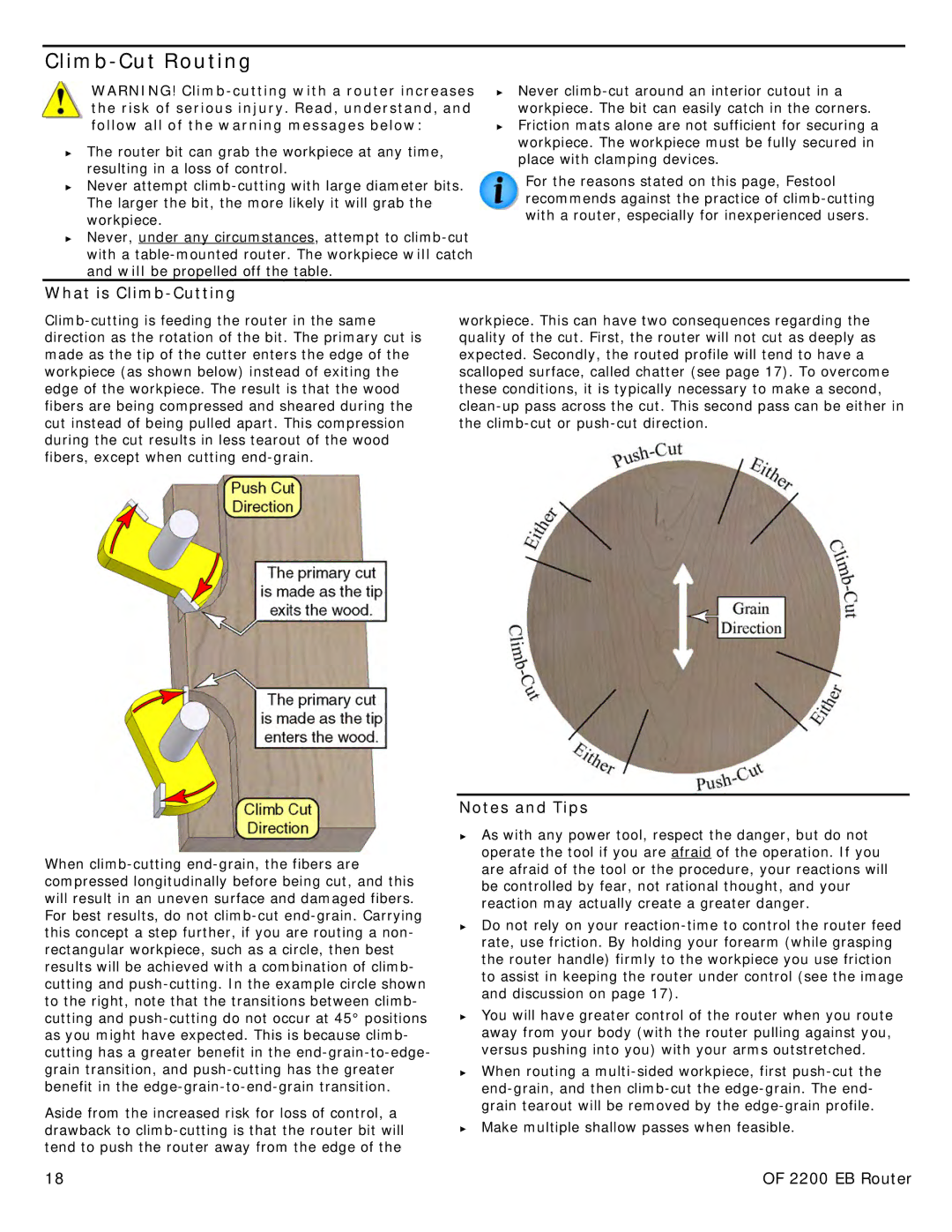
Climb-Cut Routing
WARNING!
►The router bit can grab the workpiece at any time, resulting in a loss of control.
►Never attempt
►Never, under any circumstances, attempt to
►Never
►Friction mats alone are not sufficient for securing a workpiece. The workpiece must be fully secured in place with clamping devices.
For the reasons stated on this page, Festool recommends against the practice of
What is Climb-Cutting
When
Aside from the increased risk for loss of control, a drawback to
workpiece. This can have two consequences regarding the quality of the cut. First, the router will not cut as deeply as expected. Secondly, the routed profile will tend to have a scalloped surface, called chatter (see page 17). To overcome these conditions, it is typically necessary to make a second,
Notes and Tips
►As with any power tool, respect the danger, but do not operate the tool if you are afraid of the operation. If you are afraid of the tool or the procedure, your reactions will be controlled by fear, not rational thought, and your reaction may actually create a greater danger.
►Do not rely on your
►You will have greater control of the router when you route away from your body (with the router pulling against you, versus pushing into you) with your arms outstretched.
►When routing a
►Make multiple shallow passes when feasible.
18 | OF 2200 EB Router |
